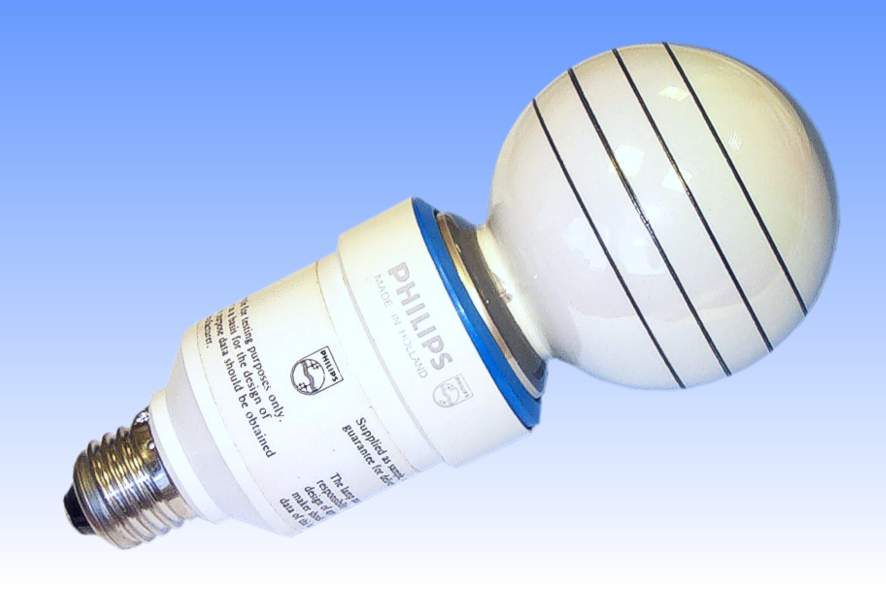
|
Philips XL 20W Induction Lamp Prototype |

To keep electromagnetic interference under control, the XL lamp employs conductive silver rings on the outside of the bulb to reduce magentic fields, removing the problem of induced currents in the mains terminals. Additional shielding is effected with a fluorine doped tin oxide semi-conducting film on the inner bulb surface, which also serves as a starting aid. By connecting this and a copper heat-sinking rod inside the bulb stem to one terminal of the mains, the striking voltage is reduced by 15% to around 175V. The phosphor is a high efficiency blend believed to consist of green cerium magnesium aluminate activated by terbium, and red yttrium oxide activated by trivalent europium.
The construction of the glass discharge vessel is also worthy of mention. It consists of an inner re-entrant portion with a flared base, this area mating with the similarly flared out area of the bulb neck. The two are sealed together with a low melting temperature lead-based glass enamel, with the electrically conductive film sandwiched in between. By this method external connections to the film can easily be made.


| Manufacturer: | Philips Lighting | |
| Lamp Power: | 20 Watts | |
| Lamp Voltage: | 220 Volts | |
| Lamp Current: | 0.2 Amperes | |
| Frequency: | 2.65 Megahertz | |
| Cap Type: | E27/27 | Nickel Plated Brass |
| Bulb Type: | G-75 | Soda-lime glass |
| Bulb Finish: | YOX & CMA Phosphors | FTO Semiconductor |
| Electrodes: | None | |
| Atmosphere: | Krypton 0.5 torr | Mercury 6mg |
| Luminous Flux: | 1,200 lm @ 100h | |
| Luminous Efficacy: | 60 lm/W @ 100h | |
| Colour Temperature & CRI: | CCT: 2900K | CRI: Ra 75 |
| Chromaticity Co-ordinates: | CCx: 0.458 | CCy: 0.420 |
| Rated Lifetime: | Not determined | |
| Warm-up & Re-strike Time: | 10s to 90% flux | Instantaneous |
| Burning Position: | Universal | |
| Overall Length: | 185 mm | 7 1/4 inches |
| Light Centre Length: | 148 mm | 5 7/8 inches |
| Factory: | Terneuzen | Netherlands |
| Date of Manufacture: | Approx. 1986 | |
| Original / Present Value: | No commercial value | |
